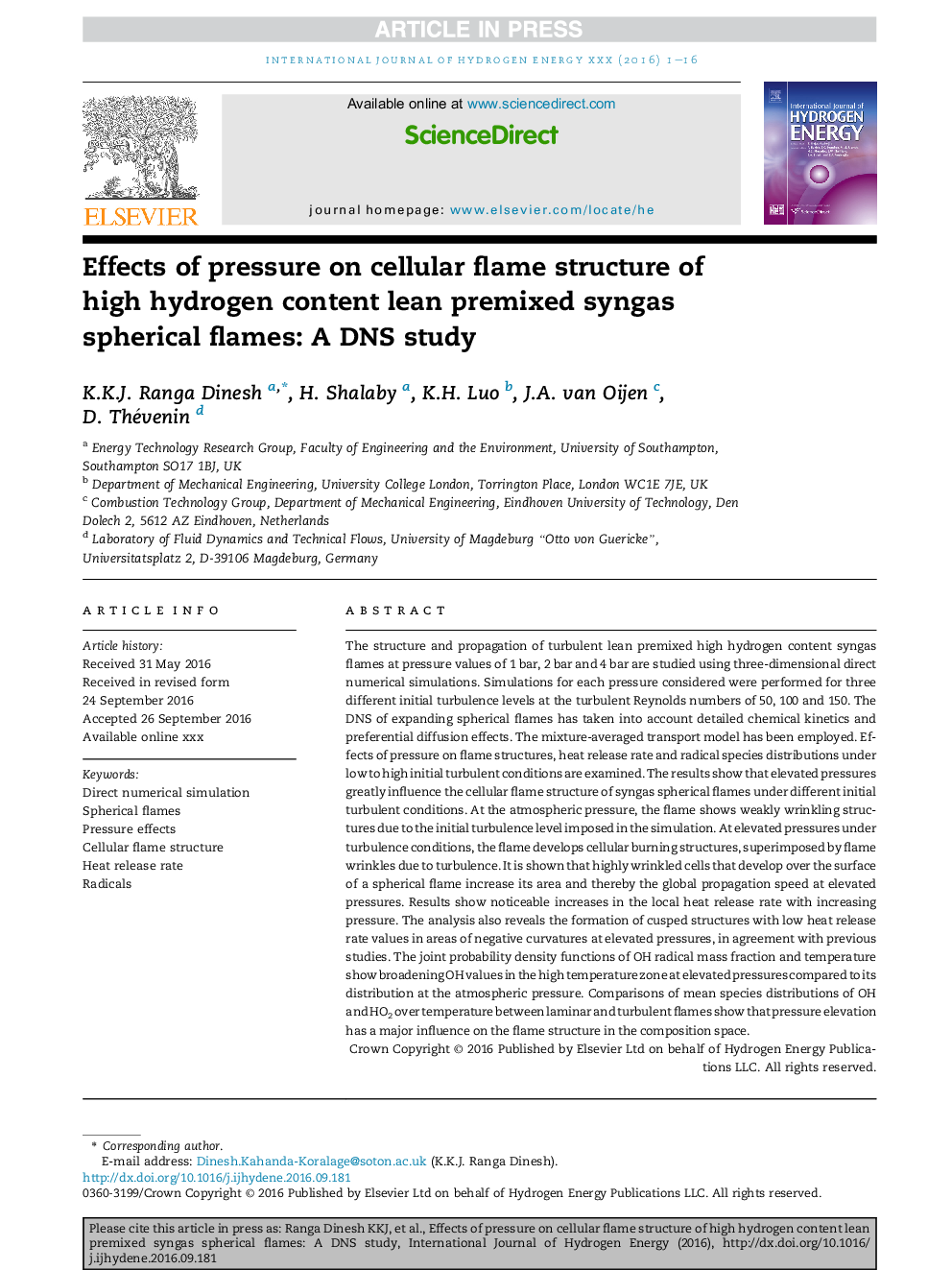| Article ID | Journal | Published Year | Pages | File Type |
|---|---|---|---|---|
| 5146898 | International Journal of Hydrogen Energy | 2016 | 16 Pages |
Abstract
The structure and propagation of turbulent lean premixed high hydrogen content syngas flames at pressure values of 1Â bar, 2Â bar and 4Â bar are studied using three-dimensional direct numerical simulations. Simulations for each pressure considered were performed for three different initial turbulence levels at the turbulent Reynolds numbers of 50, 100 and 150. The DNS of expanding spherical flames has taken into account detailed chemical kinetics and preferential diffusion effects. The mixture-averaged transport model has been employed. Effects of pressure on flame structures, heat release rate and radical species distributions under low to high initial turbulent conditions are examined. The results show that elevated pressures greatly influence the cellular flame structure of syngas spherical flames under different initial turbulent conditions. At the atmospheric pressure, the flame shows weakly wrinkling structures due to the initial turbulence level imposed in the simulation. At elevated pressures under turbulence conditions, the flame develops cellular burning structures, superimposed by flame wrinkles due to turbulence. It is shown that highly wrinkled cells that develop over the surface of a spherical flame increase its area and thereby the global propagation speed at elevated pressures. Results show noticeable increases in the local heat release rate with increasing pressure. The analysis also reveals the formation of cusped structures with low heat release rate values in areas of negative curvatures at elevated pressures, in agreement with previous studies. The joint probability density functions of OH radical mass fraction and temperature show broadening OH values in the high temperature zone at elevated pressures compared to its distribution at the atmospheric pressure. Comparisons of mean species distributions of OH and HO2 over temperature between laminar and turbulent flames show that pressure elevation has a major influence on the flame structure in the composition space.
Related Topics
Physical Sciences and Engineering
Chemistry
Electrochemistry
Authors
K.K.J. Ranga Dinesh, H. Shalaby, K.H. Luo, J.A. van Oijen, D. Thévenin,
